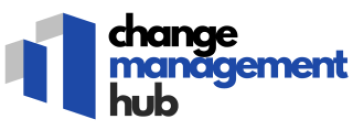Understanding Coaching in the Workplace
Exploring the Core of Coaching
Coaching in the workplace is a vital element that goes beyond mere guidance. It is a robust process centered around performance improvement and fostering a culture of growth. At its core, coaching is about enhancing employee performance and enabling individuals to understand their potential. Progressive improvement is a key objective of coaching, distinguishing it from more rigid forms like discipline or being written up.
In contrast with disciplinary action, coaching is a more proactive and supportive approach. It involves an open dialogue where managers provide constructive feedback, aiming to support employee growth. Unlike a written warning, coaching starts with verbal coaching and uses feedback coaching techniques to guide employees in their development trajectory.
Managers leverage performance management techniques in coaching to address performance issues constructively. The focus remains on employees' long-term development and cultivating an environment conducive to collective growth. This contrasts sharply with progressive discipline or corrective action, which tend to focus on immediate resolution of issues.
Understanding this process allows both managers and employees to move forward effectively with other aspects like receiving coaching feedback. It’s crucial in helping employees recognize areas needing improvement while reinforcing a positive culture in the workplace. For further insights on overcoming resistance in change management and coaching, you can visit this
effective strategies for managing resistance resource.
The Purpose of Being Written Up
The Importance and Consequences of Being Written Up
In the workplace, being written up typically signifies a formal action taken by management to address performance issues or behavioral concerns with an employee. This process is often part of a broader framework known as progressive discipline, which aims to correct problems while maintaining a fair and structured approach.
Being written up serves several purposes:
- Documentation: It creates a record of the employee performance issues, ensuring that there is clear evidence that the employee has been informed of the concerns. This documentation is crucial if further disciplinary actions are needed.
- Catalyst for Improvement: A written warning can sometimes be the necessary prompt for an employee to recognize the seriousness of their shortcomings and initiate change.
- Clarification of Expectations: It outlines specific areas for improvement and sets clear expectations moving forward.
- Protection for the Organization: By documenting incidents and providing opportunities for improvement, employers protect themselves against potential legal action related to employee termination.
The process of being written up can be part of a final written warning or even lead to more severe disciplinary action if improvements are not made. This contrasts with coaching, which tends to focus on positive growth by offering ongoing support and guidance.
Managers must navigate these processes thoughtfully, understanding that while both coaching and being written up serve different purposes, they are integral to fostering a culture growth and encouraging employee development. Effective feedback, whether through coaching feedback or written warnings, must be delivered with clarity and fairness, facilitating a conducive environment for improvement and long-term performance enhancement.
For a deeper understanding of how these processes can be managed effectively, explore these
effective strategies for managing resistance in change management.
Key Differences Between Coaching and Being Written Up
Distinguishing Between Coaching and Being Written Up
In the fast-paced world of workplace dynamics, it's easy to confuse coaching with being written up, especially when performance issues come to light. However, it's crucial to distinguish between these approaches, as they serve different purposes and have distinct impacts on employee growth and culture.
Coaching is a supportive activity aimed at guiding employees towards performance improvement and personal development. It involves verbal coaching and feedback coaching, which can be part of a performance management strategy. This process is designed to help employees understand their strengths, identify areas for improvement, and take steps toward long-term growth. Effective coaching fosters a culture of continuous improvement and proactive engagement, where employees feel empowered to take ownership of their progress.
On the other hand, being written up is typically associated with disciplinary action, often serving as a formal step in a progressive discipline process. This written warning indicates a significant breach of workplace policies or severe performance issues. It serves as a more corrective action, highlighting specific behaviors that need to change immediately to meet the organization's standards. Being written up is often viewed as a final measure when previous feedback and corrective actions have not led to desired outcomes.
For managers, it’s important to balance these approaches based on the context and severity of the situation. While coaching might offer a more supportive approach, being written up provides a formal structure that can lead to progressive corrective actions if necessary. Understanding these key differences can help in developing effective change management strategies that align with broader organizational goals. To learn more about representative management in change initiatives, visit this
link.
The Role of Feedback in Change Management
The Vital Role of Feedback in Change Management
In any workplace environment, feedback is an essential tool that helps bridge the gap between current and desired performance levels. Effective coaching requires managers to engage in constructive feedback coaching, which serves as a means to encourage employee growth and align with the organization's vision.
Providing coaching feedback is more than just addressing performance issues. It involves a proactive approach where managers and employees collaborate towards performance improvement. This collaboration nurtures a culture of continuous development, fostering an environment where employees feel supported and motivated to enhance their skills.
Feedback is not exclusive to one-time events. Instead, it should be an ongoing process integrated into the daily routine. Regular, verbal coaching allows for timely corrective action before performance issues necessitate written discipline measures or final disciplinary actions. When coaching is done right, it progresses beyond just correcting mistakes to helping create a long-term culture of improvement and accountability.
While being written up or issued a written warning is part of a more formal, progressive discipline process, integrating coaching into performance management can prevent the need for such drastic measures. Managers focusing on corrective actions instead of punitive disciplinary actions help in creating a supportive workplace culture. In diverse work environments, well-rounded feedback systems ensure that both coaching and discipline serve the purpose of enhancing overall employee performance, making every workday an opportunity for progressive improvement.
In understanding the differences between coaching and being written up, it's important to recognize that feedback stands as a pillar of effective change management. It acts as a conduit for clear communication between managers and employees, enabling both parties to move forward together toward mutual goals and organizational success.
Best Practices for Effective Coaching
Strategies for Maximizing Coaching Effectiveness
Effective coaching in the workplace entails more than offering employees generic advice; it demands a structured and thoughtful approach capable of driving real growth. Managers aiming to leverage coaching for performance improvement and progressive discipline should focus on several best practices conducive to achieving these objectives:
- Personalized Coaching Plans: Understand the unique strengths and developmental needs of each employee to create tailored coaching strategies. A one-size-fits-all approach fails to address individual performance issues effectively.
- Establish Clear Goals: Collaboratively set clear, attainable goals for the coaching process. Define what success looks like for both the employee and the organization, ensuring alignment on expectations.
- Consistent Feedback Coaching: Frequent, constructive feedback is crucial for sustained progress. Regularly scheduled feedback sessions help employees understand their performance trajectory and areas needing corrective action.
- Reinforce Positive Behavior: Use verbal coaching to highlight and validate improvements or positive performance milestones. Acknowledging efforts fosters motivation and reinforces a culture of continuous improvement.
- Address Resistance to Change: Employees might resist coaching or corrective actions due to a lack of understanding or fear of disciplinary action. Cultivating a supportive environment encourages open dialogue and reduces anxiety surrounding performance management.
By applying these best practices, managers can mitigate potential challenges associated with performance issues and disciplinary actions. Effective coaching becomes an integral part of their approach to cultivating a high-performance culture in the organization. Ensuring that coaching strategies and progressive corrective measures are positively reinforced contributes to long-term employee engagement and organizational growth.
Navigating Workplace Challenges with Coaching and Write-Ups
Strategies for Successfully Handling Workplace Challenges
Navigating challenges in the workplace requires a balanced approach, combining coaching and disciplinary actions to foster an environment of growth and improvement.
First, it's crucial for managers to understand the culture they want to cultivate. Establishing an atmosphere where feedback is welcomed and viewed as a stepping stone for growth can lead to long-term employee development. Coaching provides an opportunity for managers to offer support and guidance, focusing on employee performance and driving progressive improvement.
However, when performance issues persist or escalate, formal measures like written warnings may become necessary. It's essential to differentiate when coaching is appropriate and when a more structured disciplinary action should be taken. This progressive discipline ensures that corrective action is taken only when needed, providing employees with clear expectations and a path forward.
Creating a supportive environment requires regular and effective feedback. Coaching feedback should be specific, actionable, and aimed at encouraging improvement. Managers should engage in verbal coaching sessions that reinforce positive behaviors and address areas needing improvement, establishing a dialogue that builds trust and understanding.
Both coaching and being written up play significant roles in performance management. While coaching focuses on guiding and developing employees, written warnings send a message about the seriousness of an issue and often serve as a final step in the performance improvement process.
Finally, implementing these strategies effectively requires managers to stay committed to their approach, continuously evaluating employee growth and performance. By understanding the nuances of coaching versus written disciplinary actions, workplaces can foster a culture of continuous improvement, aligning with both immediate and long-term organizational goals.














